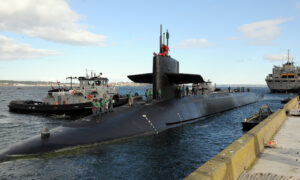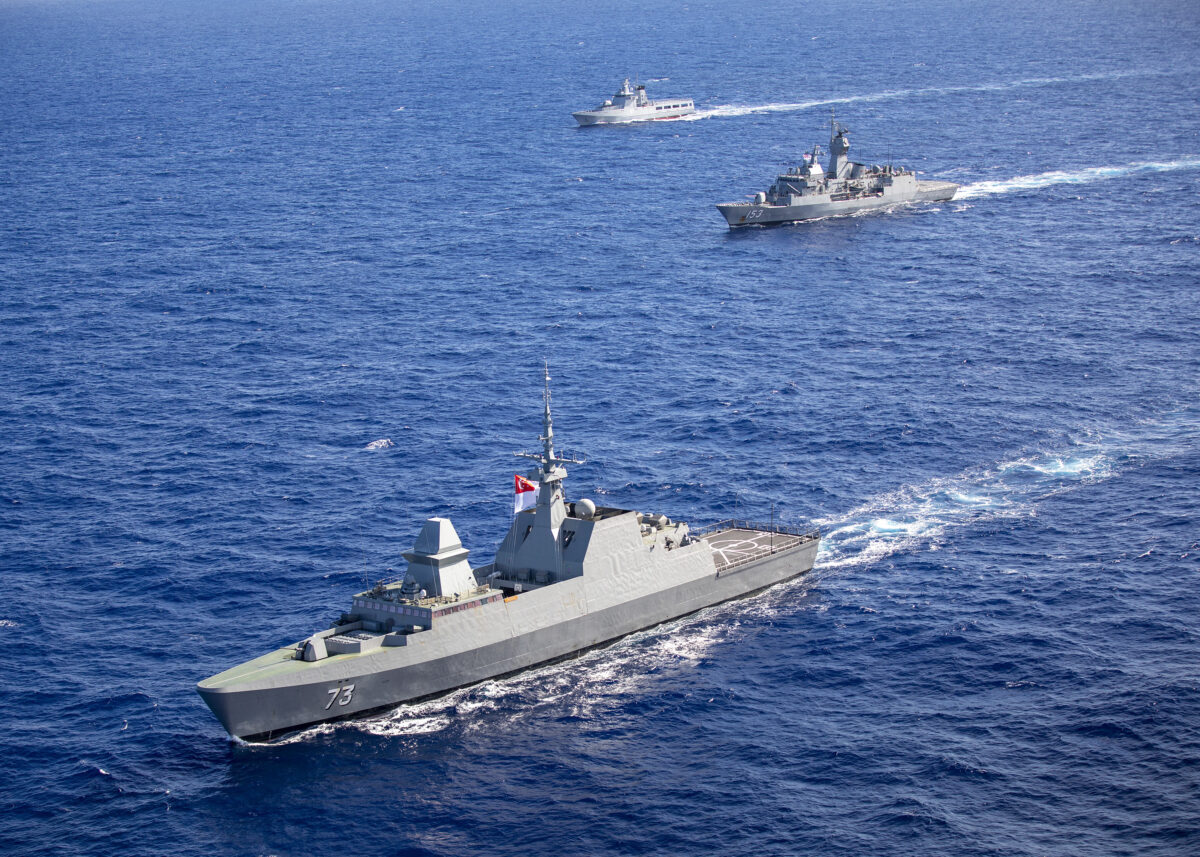Southeast Asia Needs More Submarines—Not Fewer
CommentaryIt is a common cliché that the Asia-Pacific is somehow in the “grip of a regional arms race.” Every few months, there appears an article in the press that Asian militaries are in a “missile race” or a “naval arms race” or some kind of “action-reaction arming.” Much of this is driven by rising regional tensions and enabled by steady increases in Asian military spending, which, in turn, have fueled a veritable shopping spree for advanced conventional weaponry. The point of these stories is that such arms purchases are subverting regional stability. The action of acquiring such arms, which is supposed to increase a nation’s security, is actually undermining it, as countries view with alarm and suspicion the apparently aggressive arming by their neighbors and react accordingly. As a result, these acquisitions have the unintended consequence of actually increasing regional insecurities and tensions, often leading to a destabilizing spiraling effect known as the “security dilemma.” However, calling something an “arms race” is a bit of an intellectual cheat. In the first place, an “arms race” is instinctively seen as something bad. An arms race is, by definition, an irrational, counterproductive, and even futile act. It is, by its very nature, only detrimental to security and stability. The problem with this, however, is that we habitually throw out the term “arms race” without really defining what it means to be in one. Too often, “arms races” are ascribed to any kind of active-reactive arming without weighing whether such arming really undermines regional security. A CH-148 Cyclone helicopter and a CP-140 Aurora maritime patrol aircraft fly over HMCS WINNIPEG as part of a photo exercise in the Asia-Pacific Region during Operation NEON on Nov. 15, 2020. (Sailor 1st Class Valerie LeClair, MARPAC Imaging Services/CAF Combat Camera via Flickr) One of the more common themes is the “submarine arms race,” especially when it comes to Southeast Asia. To be clear, Southeast Asian navies have acquired a sizable number of diesel-electric submarines over the past two or three decades. Moreover, this proliferation of submarines has been both quantitative and qualitative: more navies are buying submarines, or they are buying more of them, and the capabilities of these submarines have grown. But whether this constitutes an arms race or even a destabilizing situation is open to debate. For a long time, few countries in Southeast Asia operated submarines. Indonesia owned two boats acquired in the early 1980s. In the mid-1990s, however, several countries in the region that had never before owned submarines began to purchase them. Singapore became the first new country in Southeast Asia to acquire a submarine. The Republic of Singapore (RSN) bought six used submarines from Sweden: in the late 1990s, four ex-Sjöormen-class (built in the late 1960s but upgraded for the RSN), and then, in the early 2010s, two ex-Västergötland-class (renamed the Archer-class). In 2014, Singapore closed a deal with the German shipbuilder ThyssenKrupp Marine for four brand-new Type-218SG submarines; all these boats should be delivered by 2024. Malaysia followed on by acquiring two Scorpène-class submarines from France in the early 2000s. In the early 2010s, Vietnam placed an order with Russia for six diesel-electric Kilo-class submarines. Indonesia is in the process of replacing its obsolete German Type-209 submarines (one of which tragically sank in 2021, with the loss of all hands) with modern subs acquired from South Korea. Three boats have already been delivered—including one built in Indonesia—and a follow-on order for three more subs was signed in 2019. Most recently, Thailand in 2017 closed a deal with China for three Yuan-class diesel-electric submarines. However, this program has been held up by Germany’s refusal to supply the diesel engines to power the boats. Her Majesty’s Australian Ship Stuart sails in company with the Republic of Singapore Ship Supreme and Kapal Diraja Brunei (Royal Brunei Ship) Daruleshan through the Pacific Ocean as they prepare to take part in Exercise Rim of the Pacific 2020 on Aug. 17, 2020 (Australian Department of Defense) Not only are more Southeast Asian navies operating more submarines, but these subs are generally among the most modern types to be had. Singapore’s newest submarines, for example, are outfitted with technology for air-independent propulsion (AIP): the Stirling engine for the Archer-class and fuel cells for the Type-218SG boats. AIP technologies permit these submarines to remain submerged for much longer periods of time than conventional battery-powered diesel-electric submarines, greatly expanding their usefulness. Modern submarines also contain more advanced sonar, fire-control systems, and torpedoes; some can even launch cruise missiles. Moreover, these new submarines are highly automated, reducing the number of sailors required to run them. A Type-209 submarine built in

Commentary
It is a common cliché that the Asia-Pacific is somehow in the “grip of a regional arms race.” Every few months, there appears an article in the press that Asian militaries are in a “missile race” or a “naval arms race” or some kind of “action-reaction arming.” Much of this is driven by rising regional tensions and enabled by steady increases in Asian military spending, which, in turn, have fueled a veritable shopping spree for advanced conventional weaponry.
The point of these stories is that such arms purchases are subverting regional stability. The action of acquiring such arms, which is supposed to increase a nation’s security, is actually undermining it, as countries view with alarm and suspicion the apparently aggressive arming by their neighbors and react accordingly. As a result, these acquisitions have the unintended consequence of actually increasing regional insecurities and tensions, often leading to a destabilizing spiraling effect known as the “security dilemma.”
However, calling something an “arms race” is a bit of an intellectual cheat. In the first place, an “arms race” is instinctively seen as something bad. An arms race is, by definition, an irrational, counterproductive, and even futile act. It is, by its very nature, only detrimental to security and stability.
The problem with this, however, is that we habitually throw out the term “arms race” without really defining what it means to be in one. Too often, “arms races” are ascribed to any kind of active-reactive arming without weighing whether such arming really undermines regional security.

One of the more common themes is the “submarine arms race,” especially when it comes to Southeast Asia. To be clear, Southeast Asian navies have acquired a sizable number of diesel-electric submarines over the past two or three decades. Moreover, this proliferation of submarines has been both quantitative and qualitative: more navies are buying submarines, or they are buying more of them, and the capabilities of these submarines have grown. But whether this constitutes an arms race or even a destabilizing situation is open to debate.
For a long time, few countries in Southeast Asia operated submarines. Indonesia owned two boats acquired in the early 1980s. In the mid-1990s, however, several countries in the region that had never before owned submarines began to purchase them.
Singapore became the first new country in Southeast Asia to acquire a submarine. The Republic of Singapore (RSN) bought six used submarines from Sweden: in the late 1990s, four ex-Sjöormen-class (built in the late 1960s but upgraded for the RSN), and then, in the early 2010s, two ex-Västergötland-class (renamed the Archer-class). In 2014, Singapore closed a deal with the German shipbuilder ThyssenKrupp Marine for four brand-new Type-218SG submarines; all these boats should be delivered by 2024.
Malaysia followed on by acquiring two Scorpène-class submarines from France in the early 2000s. In the early 2010s, Vietnam placed an order with Russia for six diesel-electric Kilo-class submarines.
Indonesia is in the process of replacing its obsolete German Type-209 submarines (one of which tragically sank in 2021, with the loss of all hands) with modern subs acquired from South Korea. Three boats have already been delivered—including one built in Indonesia—and a follow-on order for three more subs was signed in 2019.
Most recently, Thailand in 2017 closed a deal with China for three Yuan-class diesel-electric submarines. However, this program has been held up by Germany’s refusal to supply the diesel engines to power the boats.

Not only are more Southeast Asian navies operating more submarines, but these subs are generally among the most modern types to be had. Singapore’s newest submarines, for example, are outfitted with technology for air-independent propulsion (AIP): the Stirling engine for the Archer-class and fuel cells for the Type-218SG boats. AIP technologies permit these submarines to remain submerged for much longer periods of time than conventional battery-powered diesel-electric submarines, greatly expanding their usefulness. Modern submarines also contain more advanced sonar, fire-control systems, and torpedoes; some can even launch cruise missiles.
Moreover, these new submarines are highly automated, reducing the number of sailors required to run them. A Type-209 submarine built in the 1970s or 1980s requires a complement of 36 personnel, and the Russian Kilo-class needs more than 52 sailors. A modern submarine like the Type-218SG requires only 28.
However, this proliferation of submarines in Southeast Asia does not necessarily add up to a more unstable regional environment. In the first place, the numbers involved here are still quite small. Vietnam might possess six submarines, but the Chinese navy has over 58 diesel-electric submarines, plus six nuclear-powered attack subs. South Korea has 18 submarines, and Japan has 22.
Second, most of Southeast Asia’s submarines are rarely at sea. It is a rule of thumb that only one out of every two or three boats is on patrol at any given time. Large navies, like the United States, often have two full teams for each vessel (“blue” and “gold” crews), but smaller countries probably cannot afford this. In any event, diesel-electric submarines must frequently return to base for fueling and resupply, along with maintenance and repairs.
Submarines can be especially critical in countering China’s growing (and increasingly belligerent) military presence in maritime areas close to Southeast Asia (like the South China Sea). Surface ships are fine for “showing the flag,” but submarines have special qualities. They are stealthy and usually oriented toward offensive operations, such as reconnaissance, anti-ship and anti-submarine warfare, minelaying, inserting special operations forces, and even land-attack (using cruise missiles).
Regarding submarines, therefore, numbers count, and the more, the better. This is why Taiwan is in the midst of constructing eight indigenous submarines. The quantity has a quality all its own, which is particularly important when trying to deter or counter China’s growing military might. Countries bordering on the South China Sea should buy more submarines, not fewer.
Views expressed in this article are the opinions of the author and do not necessarily reflect the views of The Epoch Times.












